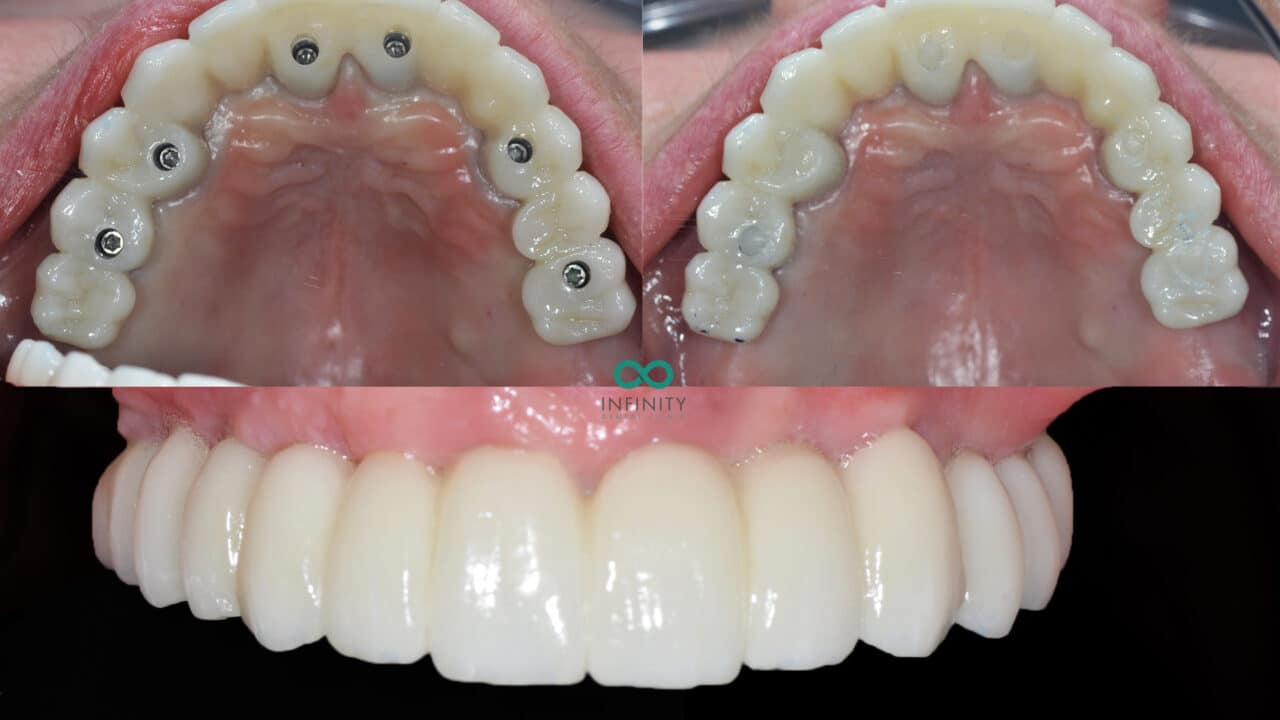Getting The Dental Sense To Work
Getting The Dental Sense To Work
Blog Article
Some Known Facts About Dental Sense.
Table of ContentsThe Basic Principles Of Dental Sense The smart Trick of Dental Sense That Nobody is DiscussingNot known Facts About Dental SenseThe Best Guide To Dental Sense
are clinical devices surgically implanted into the jaw to restore an individual's capability to eat or their appearance. They supply support for synthetic (phony) teeth, such as crowns, bridges, or dentures. When a tooth is shed as a result of injury or disease, an individual can experience difficulties such as fast bone loss, defective speech, or changes to chewing patterns that result in pain.Oral dental implant systems contain an oral implant body and dental implant joint and may also consist of a joint fixation screw. Professional teeth whitening. The oral implant body is surgically put in the jawbone in location of the tooth's root. The dental implant joint is typically connected to the dental implant body by the joint addiction screw and extends via periodontals into the mouth to sustain the attached fabricated teeth
(https://forums.hostsearch.com/member.php?274218-dentalsense1)Framework of The Oral Implant System picking oral implants, talk with your dental service provider about the potential benefits and risks, and whether you are a prospect for the treatment. Points to take into consideration: Your overall health is an essential element in identifying whether you are a good prospect for dental implants, for how long it will require to heal, and the length of time the dental implant might remain in location.
Cigarette smoking might influence the recovery process and reduce the lasting success of the implant. The healing process for the implant body might take several months or longer, throughout which time you normally have a temporary abutment in area of the tooth. the dental implant treatment: Carefully follow the oral health instructions offered to you by your oral service provider.
The smart Trick of Dental Sense That Nobody is Discussing
Implant failing can lead to the demand for another operation to fix or change the dental implant system. Restores the capability to eat Restores cosmetic look Assists keep the jawbone from shrinking due to bone loss Protects the wellness of the bordering bone and periodontals Assists maintain adjacent (nearby) teeth secure Boosts lifestyle Damages to bordering all-natural teeth during dental implant placement Injury to the surrounding cells throughout surgical procedure, such as sinus opening Injury during surgery (for instance, fracture of surrounding jawbone) Inadequate function, such as really feeling like the teeth do not attack together typically A sensation that the tooth hangs or turning in location arising from a joint screw loosening Implant body failure (looseness of the dental implant body) because of systemic infection, which may be most likely in clients with unrestrained diabetes due to neighborhood infection in bone and gums sustaining the implant body because of delayed healing, which may be most likely in individuals that smoke Trouble cleaning up the gums around the dental implant, leading to poor dental health Neglected gum illness Post-surgical feeling numb because of nerve impingement or damage Constantly notify health care providers and imaging technicians that you have dental implants before any type of magnetic resonance imaging (MRI) or x-ray treatments.
FDA is not mindful of any type of adverse occasions reported for MRI or x-ray procedures with dental implants. Dental implants systems are generally made of materials that adhere to worldwide consensus standards of the International Company for Standardization (ISO) or ASTM International. These criteria have details of what makes a risk-free product.

An oral implant is a structure that replaces a missing out on tooth. With screw-like devices, the cosmetic surgeon inserts a dental implant right into the jawbone, and it works as an anchor for a fabricated tooth, called a crown. A gadget called a joint connects the fabricated tooth to the dental implant. The crown is tailor-made to fit the individual's mouth and match the color of their teeth.
The Greatest Guide To Dental Sense
Some individuals are not eligible for dental implant surgery. It is for dental doctors to operate on individuals with: intense illnessuncontrollable metabolic diseasebone or soft cells illness or infectionIf these issues are see here now settled, a person can have the surgical procedure. In, oral doctors avoid operating on individuals with: If individuals with any one of the above undertake dental implant surgical treatment, there is a higher danger of the dental implant falling short.

Dental dental implant surgical treatment is an individualized process. Provide you time to recover. Connect the article and last crown, bridge or denture.
Next, your specialist will carefully position the dental implant right into your jaw. Finally, your doctor will rearrange your periodontals and shut the laceration with stitches. If your implant is near the front of your mouth, your dentist will make a momentary tooth for you to put on until you heal. That way, you won't have a space in your smile while you recoup.
Dental Sense Fundamentals Explained
Your supplier can tell you what to anticipate in your circumstance. During the recovery phase, your jawbone ought to fuse to the dental implant. This process, called osseointegration, is essential for security and lasting success. This process can take anywhere from 3 to nine months. Sometimes, it might take much longer.
As soon as your implant heals, your dentist can attach the abutment (small connector post) and your final reconstruction (crown, bridge or denture). This typically takes about one hour to finish and may call for a second minor surgical treatment. You should not feel any type of pain throughout your oral implant treatment because your service provider will utilize drug to numb your gums.
Report this page